Co-packaged Optics Market Size
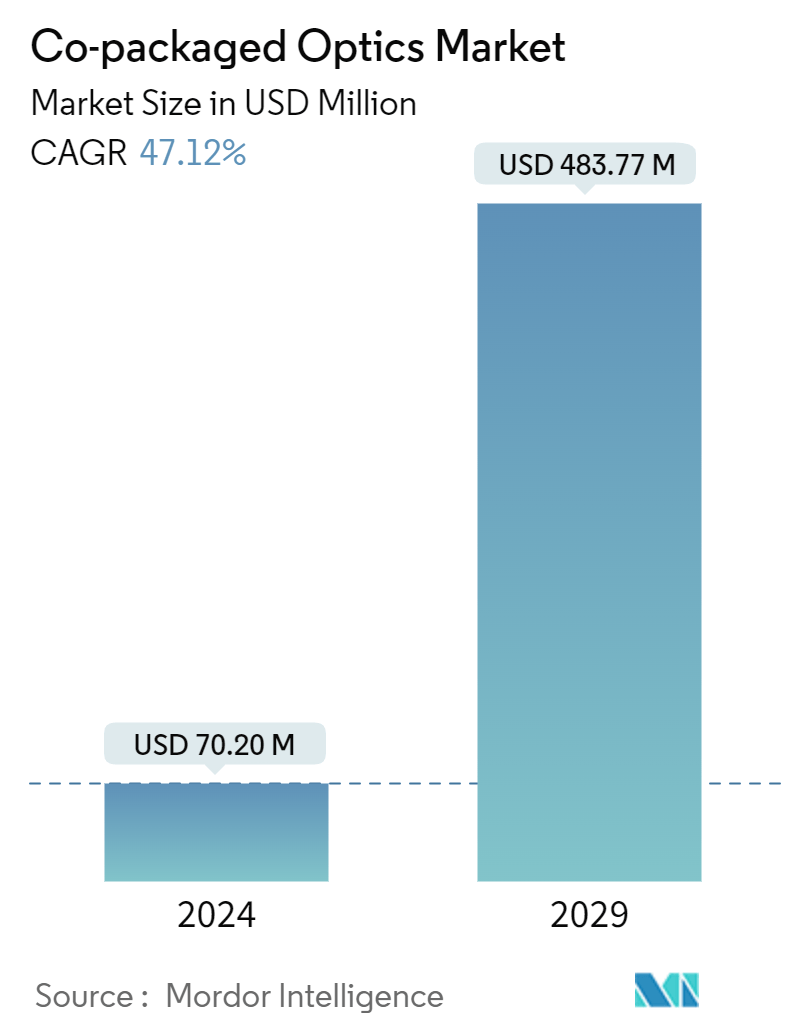
| Study Period | 2019 - 2029 |
| Market Size (2024) | USD 70.20 Million |
| Market Size (2029) | USD 483.77 Million |
| CAGR (2024 - 2029) | 47.12 % |
| Fastest Growing Market | Asia Pacific |
| Largest Market | North America |
Major Players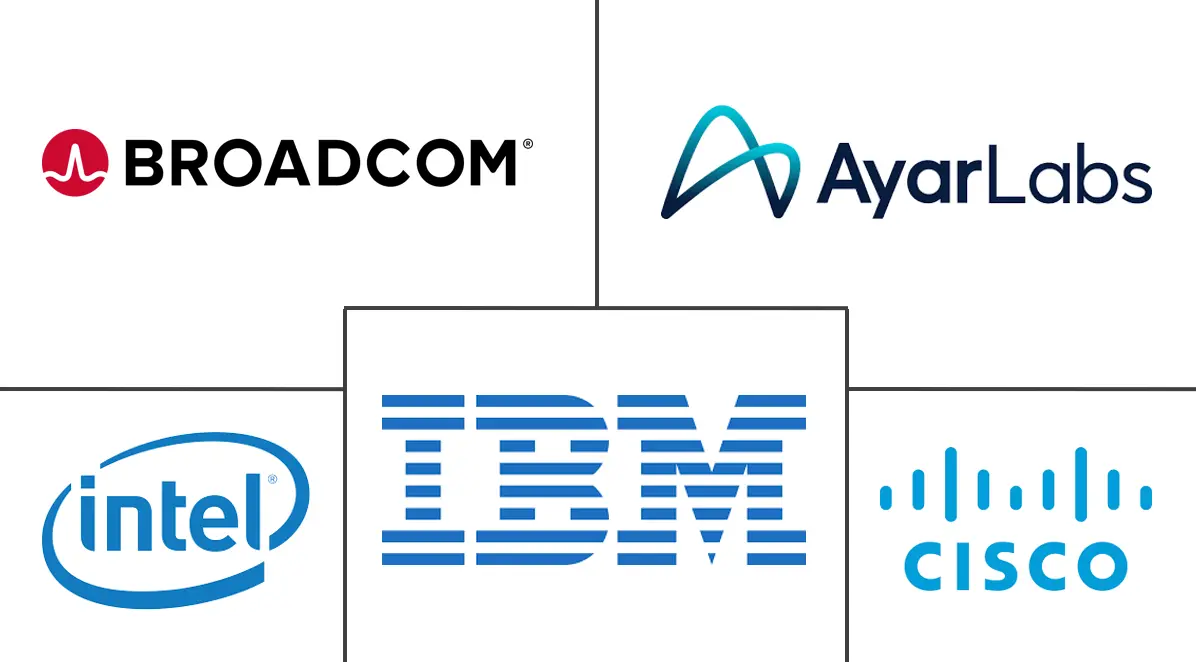
*Disclaimer: Major Players sorted in no particular order |
Co-packaged Optics Market Analysis
The Co-packaged Optics Market size is estimated at USD 70.20 million in 2024, and is expected to reach USD 483.77 million by 2029, growing at a CAGR of 47.12% during the forecast period (2024-2029).
- The co-packaged optics (CPO) market is growing rapidly due to the accelerating demand for high-speed data transmission and the exponential growth of data centers and cloud services. Co-packaged optics integrate optical and electronic components into a single package, reducing the distance that electrical signals need to travel and minimizing latency and power consumption. This addresses the bandwidth limitations of traditional copper interconnects and meets the growing requirements of next-generation data center architectures.
- Moreover, the ongoing shift toward 400 G, 800 G, and beyond in data center networking is a key factor propelling the co-packaged optics market. These higher-speed standards require innovations that CPOs can deliver, such as improved signal integrity and energy efficiency. Data centers require faster, more efficient data processing and transmission capabilities, and CPO technology can support the scaling needs of these data centers.
- The co-packaged optics market is benefiting from collaborations between industry leaders in photonics and semiconductor manufacturing. Companies such as Intel, Cisco, and Broadcom are investing heavily in CPO research and development. These collaborations are essential for advancing the technology, reducing costs, and ensuring interoperability across different platforms.
- The adoption of co-packaged optics is supported by the development of industry standards and regulatory frameworks that ensure the compatibility and reliability of these solutions. Standards associations, including the Institute of Electrical and Electronics Engineers (IEEE) and the Optical Internetworking Forum (OIF), are working to establish guidelines that facilitate the broader deployment of CPO technology.
Co-packaged Optics Market Trends
Growth in High-performance Computing
- High-performance computing (HPC) is rapidly growing due to increasing demands for data centers, complex simulations, large-scale data processing, and advanced scientific research. This growth significantly drives the trend and development in co-packaged computing (CPC), where processors, memory, or other critical components are integrated into a single package. HPC applications often require massive data processing capabilities, and traditional interconnects between separate chips can become bottlenecks. CPC addresses this by integrating components closely, reducing latency, and increasing data throughput, which is essential for HPC workloads.
- By packaging computing elements together, CPC enhances performance and efficiency. This integration reduces the distance data needs to travel, cutting energy consumption and improving overall performance, which is crucial for HPC systems that operate at high power and require optimal energy utilization. High-performance computations generate significant heat, and CPC helps manage this by allowing for more efficient thermal solutions. Since components are packaged in proximity, better heat dissipation strategies can be tailored specifically for HPC environments.
- Scalability is another critical factor for HPC systems, which demand the ability to handle increasing computational loads. CPC offers a modular approach where additional processing power can be added without the complexities associated with traditional multi-chip setups. This modularity supports the scalable nature of HPC infrastructures. Moreover, advances in semiconductor fabrication, driven by the needs of HPC, are making CPC more viable and cost-effective. Techniques like 3D stacking and advanced interconnects are being developed to meet the stringent performance and integration requirements of HPC, further propelling the adoption of CPC.
- Reducing communication overhead between processors and memory is crucial for maintaining high performance in HPC. CPC significantly reduces this overhead by integrating these components within a single package, enabling faster and more efficient data exchanges. While initially expensive, the economies of scale driven by HPC demand are reducing the costs associated with CPC technologies. As HPC grows, the larger volumes and continuous advancements help reduce costs, making CPC more accessible and widespread.
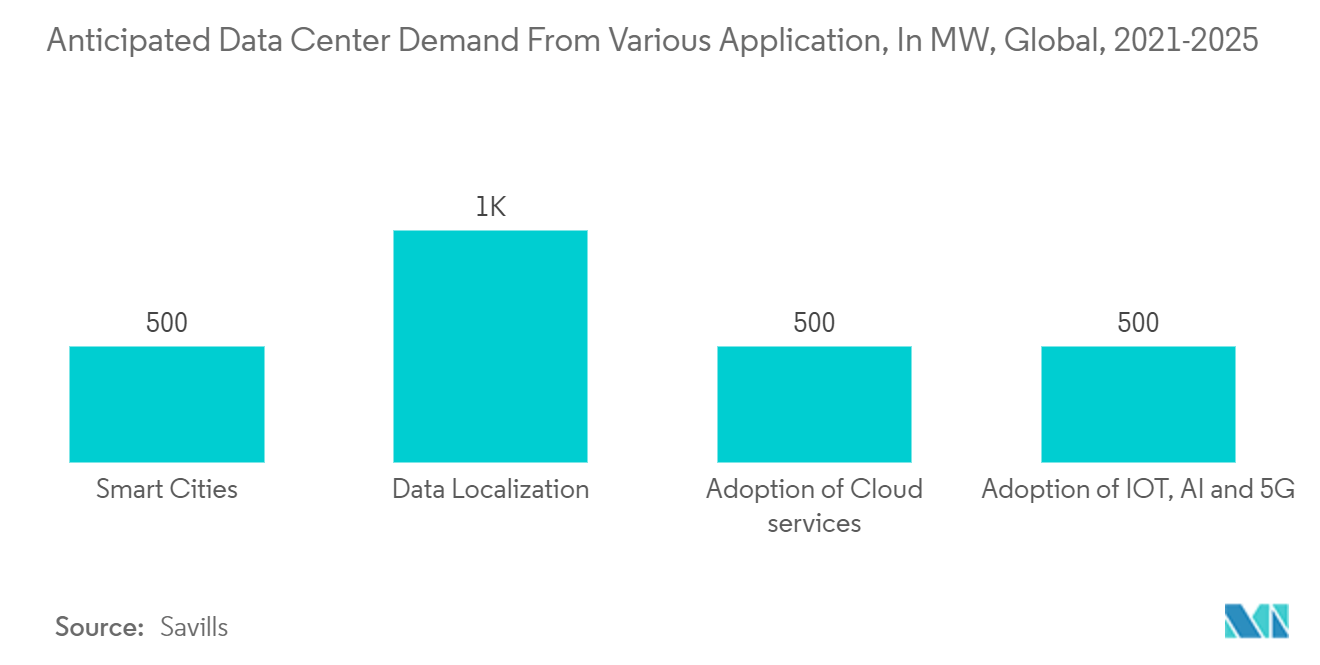
Asia-Pacific is Expected to Hold Significant Market Share
- The co-packaged optics market in Asia-Pacific is experiencing significant growth, driven by rapid advancements in data centers, telecommunications, and high-performance computing sectors.
- Countries like China, Japan, and South Korea are at the forefront, investing heavily in next-generation network infrastructure to support the exponential increase in data traffic and the demand for faster, more efficient data transmission solutions. For instance, in November 2023, China's three main telecom operators reported a combined net increase of around 26 million 5G package subscribers. This brought their total 5G package subscriber base to nearly 1.348 billion. By the end of November, 5G package subscribers made up 78.6% and 77.3% of China Mobile's and China Telecom's total mobile subscriber bases, respectively.
- The region's strong manufacturing base, coupled with supportive government policies and substantial R&D investments, is fostering innovation in co-packaged optics technology. Additionally, the presence of major tech companies and semiconductor manufacturers in Asia-Pacific is accelerating the adoption and development of these advanced optical solutions.
- This market’s growth is further propelled by the increasing implementation of 5G networks, the expansion of cloud services, and the continuous evolution of AI and IoT applications, positioning Asia-Pacific as a critical player in the global co-packaged optics landscape. According to Ericsson, 5G is projected to reach approximately 620 million subscriptions in Southeast Asia and Oceania by the end of 2028.
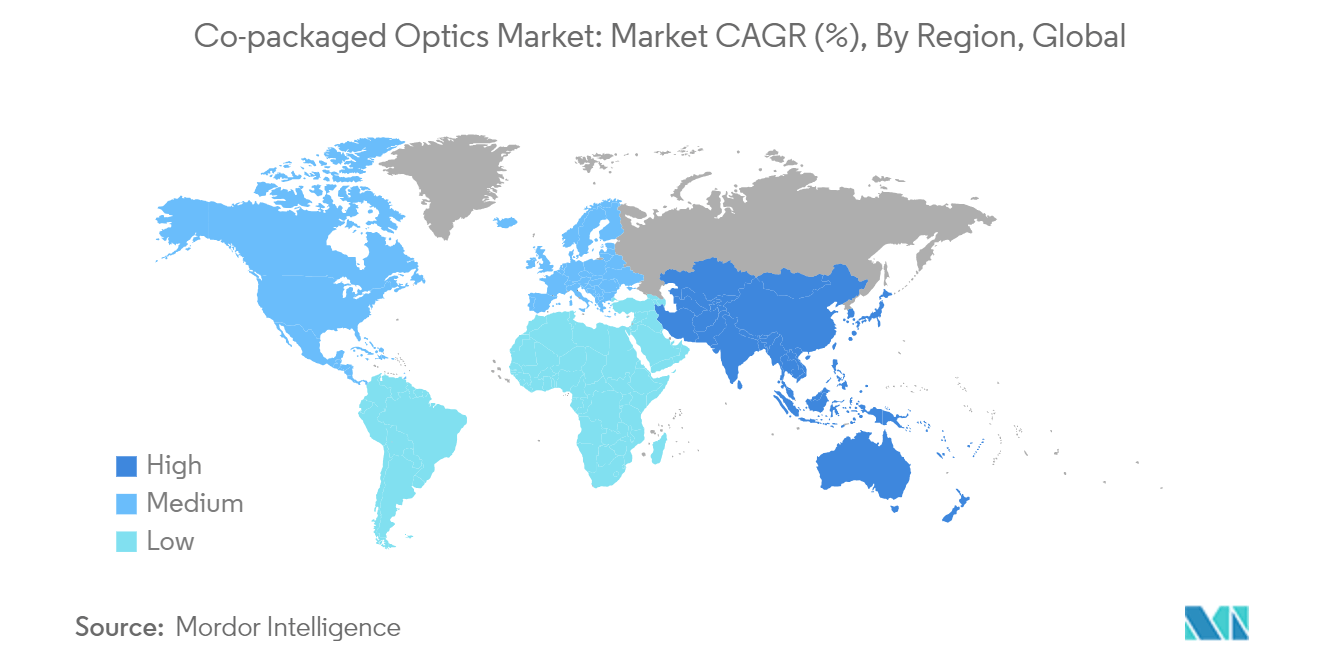
Co-packaged Optics Industry Overview
The global co-packaged optics market is highly fragmented due to several significant players. In terms of market share, the major players currently dominate the market. These major players with prominent shares in the market are focusing on expanding their customer base worldwide. These companies leverage strategic collaborative initiatives to increase their market shares and profitability.
- March 2024: At the 2024 Optical Fiber Communication Conference (OFC), Ranovus, a leading developer of advanced photonics interconnect solutions for AI/ML infrastructure, announced its collaboration with MediaTek to deliver a 6.4 Tbps co-packaged optics solution for MediaTek’s next-generation ASIC design platform. This solution is designed to support a 6.4 Tbps high-radix optical interconnect for AI/ML SoC and ethernet applications.
- March 2023: Cisco presented its vision for co-packaged optics, demonstrating not only their feasibility but also the necessity for them and the strategies to overcome deployment challenges.
Co-packaged Optics Market Leaders
-
Ayar Labs, Inc.
-
Broadcom Inc.
-
Cisco Systems, Inc.
-
IBM Corporation
-
Intel Corporation
*Disclaimer: Major Players sorted in no particular order
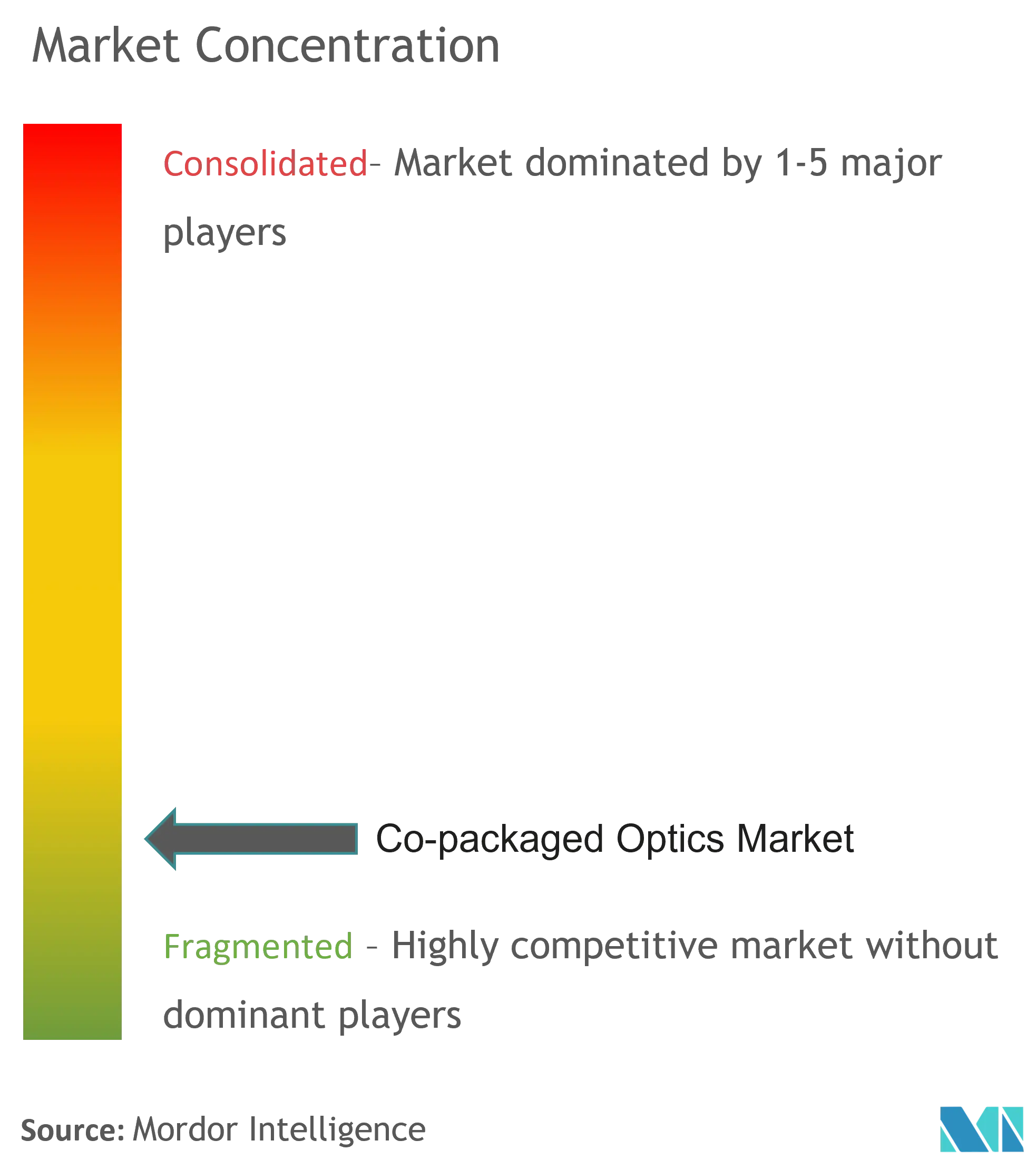
Co-packaged Optics Market News
- March 2024: Intel developed a 4 Tbps bidirectional fully integrated OCI chiplet based on Intel’s in-house silicon photonics technology. This chiplet, or tile, contains a single silicon photonics integrated circuit (PIC) with integrated lasers, an electrical IC (EIC), and a path to incorporate a detachable/re-usable optical connector. The purpose of this development is to address the AI infrastructure’s significant need for bandwidth and to enable future scalability.
- September 2023: TSMC collaborated with Broadcom and Nvidia to develop silicon photonics and co-packaged optics (CPO) following increased demand for data transmission due to the AI trend, as reported exclusively by local media outlet Economic Daily News. The company has already assembled an R&D team of over 200 employees to focus on emerging opportunities in high-speed computing chips based on silicon photonics technology. Production was expected to commence as early as the second half of this year. TSMC declined to comment on this matter.
Co-packaged Optics Market Report - Table of Contents
1. INTRODUCTION
- 1.1 Study Assumption and Market Definition
- 1.2 Scope of the Study
2. RESEARCH METHODOLOGY
3. EXECUTIVE SUMMARY
4. MARKET INSIGHTS
- 4.1 Market Overview
- 4.2 Industry Value Chain Analysis
-
4.3 Industry Attractiveness - Porter's Five Forces Analysis
- 4.3.1 Threat of New Entrants
- 4.3.2 Bargaining Power of Buyers
- 4.3.3 Bargaining Power of Suppliers
- 4.3.4 Threat of Substitute Products
- 4.3.5 Intensity of Competitive Rivalry
- 4.4 Assessment of Impact of COVID-19 on the Industry
-
4.5 Impact of Latency-Sensitive Traffic on Demand for CPO
- 4.5.1 AI and Machine Learning in Data Centers
- 4.5.2 5G, CPO, and the Impact on Data Centers
- 4.5.3 Video Conferencing and Online Events
5. MARKET DYNAMICS
-
5.1 Market Drivers
- 5.1.1 Increase in Adoption of Smart Devices and Rise in Data Traffic
- 5.1.2 Growth in the Importance of Mega Data Centers
- 5.1.3 Growth in High-performance Computing
-
5.2 Market Restraints
- 5.2.1 Increase in Network Complexity
- 5.2.2 Device Compatibility and Sustainability Issues
6. MARKET SEGMENTATION
-
6.1 By Data Rates
- 6.1.1 Less than 1.6 T
- 6.1.2 1.6 T
- 6.1.3 3.2 T
- 6.1.4 6.4 T
-
6.2 By Geography
- 6.2.1 North America
- 6.2.2 Europe
- 6.2.3 Asia
- 6.2.4 Australia and New Zealand
- 6.2.5 Latin America
- 6.2.6 Middle East and Africa
7. COMPETITIVE LANDSCAPE
-
7.1 Company Profiles*
- 7.1.1 Ayar Labs Inc.
- 7.1.2 Broadcom Inc.
- 7.1.3 Cisco Systems Inc.
- 7.1.4 IBM Corporation
- 7.1.5 Intel Corporation
- 7.1.6 Microsoft Corporation
- 7.1.7 TE Connectivity
- 7.1.8 Furukawa Electric Co. Ltd
- 7.1.9 Hisense Broadband Multimedia Technology Co. Ltd
- 7.1.10 POET Technologies
- 7.1.11 Kyocera Corporation
- 7.1.12 Huawei Technologies Co. Ltd
- 7.1.13 SENKO Advanced Components Inc.
- 7.1.14 Sumitomo Electric Industries Ltd
8. INVESTMENT ANALYSIS
9. FUTURE OUTLOOK OF THE MARKET
** Subject To AvailablityCo-packaged Optics Industry Segmentation
The co-packaged optics market is segmented by data rates (less than 1.6 T, 1.6 T, 3.2 T, and 6.4 T) and geography (North America, Europe, Asia-Pacific, Latin America, and Middle East and Africa). The market sizes and forecasts are provided in terms of value (USD) for all the above segments.
| By Data Rates | Less than 1.6 T |
| 1.6 T | |
| 3.2 T | |
| 6.4 T | |
| By Geography | North America |
| Europe | |
| Asia | |
| Australia and New Zealand | |
| Latin America | |
| Middle East and Africa |
Co-packaged Optics Market Research FAQs
How big is the Co-packaged Optics Market?
The Co-packaged Optics Market size is expected to reach USD 70.20 million in 2024 and grow at a CAGR of 47.12% to reach USD 483.77 million by 2029.
What is the current Co-packaged Optics Market size?
In 2024, the Co-packaged Optics Market size is expected to reach USD 70.20 million.
Who are the key players in Co-packaged Optics Market?
Ayar Labs, Inc., Broadcom Inc., Cisco Systems, Inc., IBM Corporation and Intel Corporation are the major companies operating in the Co-packaged Optics Market.
Which is the fastest growing region in Co-packaged Optics Market?
Asia Pacific is estimated to grow at the highest CAGR over the forecast period (2024-2029).
Which region has the biggest share in Co-packaged Optics Market?
In 2024, the North America accounts for the largest market share in Co-packaged Optics Market.
What years does this Co-packaged Optics Market cover, and what was the market size in 2023?
In 2023, the Co-packaged Optics Market size was estimated at USD 37.12 million. The report covers the Co-packaged Optics Market historical market size for years: 2019, 2020, 2021, 2022 and 2023. The report also forecasts the Co-packaged Optics Market size for years: 2024, 2025, 2026, 2027, 2028 and 2029.
Co-packaged Optics Industry Report
Statistics for the 2024 Co-packaged Optics market share, size and revenue growth rate, created by Mordor Intelligence™ Industry Reports. Co-packaged Optics analysis includes a market forecast outlook to for 2024 to 2029 and historical overview. Get a sample of this industry analysis as a free report PDF download.



